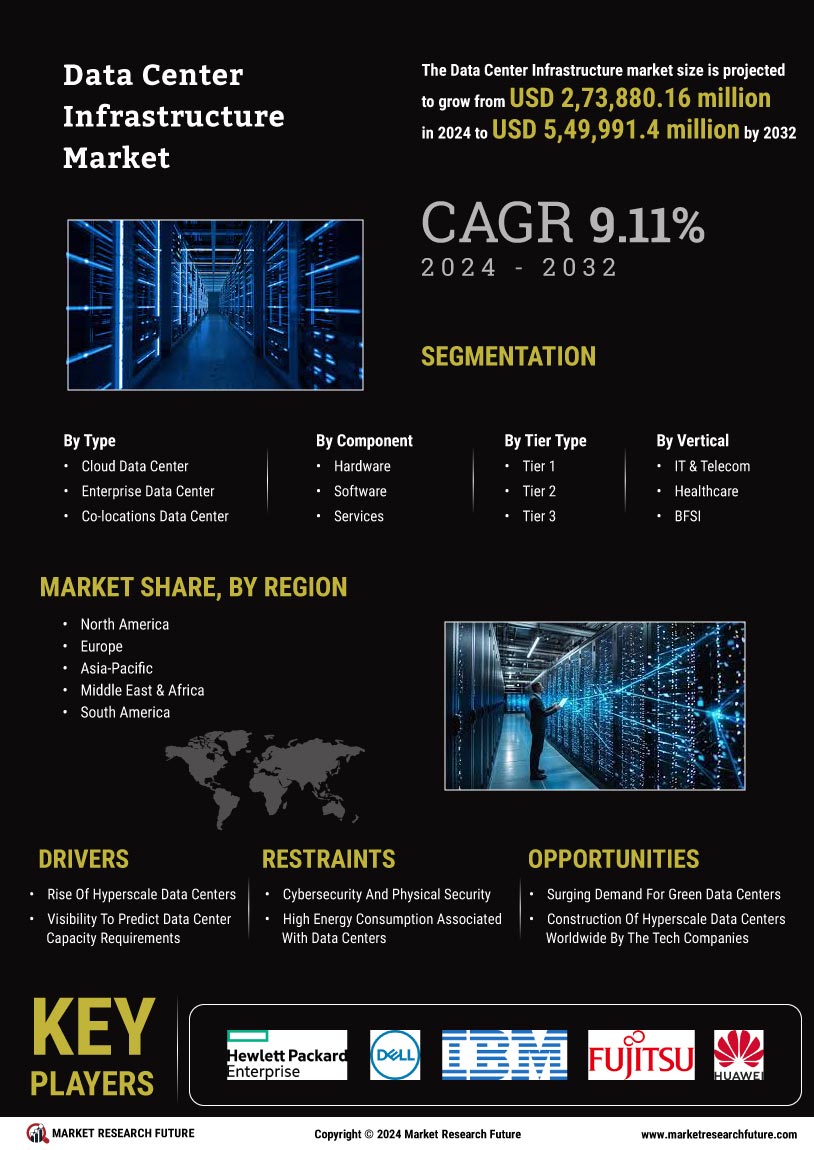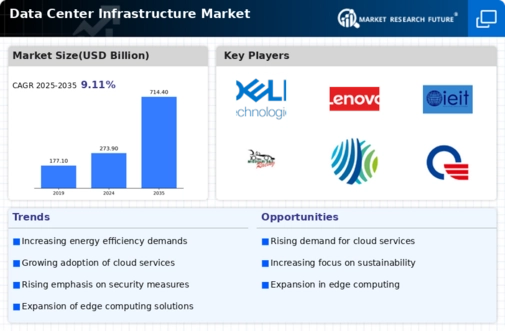Data Center Infrastructure Market Summary
As per Market Research Future Analysis, the Data Center Infrastructure market is poised for significant growth, projected to expand from USD 273.88 Billion in 2024 to USD 549.99 Billion by 2032, reflecting a CAGR of 9.11% during the forecast period. The market was valued at USD 251.03 million in 2023, driven by the rapid adoption of cloud computing, digital transformation, and the increasing demand for data storage. The rise of hyperscale data centers and the need for energy-efficient solutions further contribute to market expansion. However, challenges such as high energy consumption and complex construction processes persist. Opportunities lie in the construction of hyperscale data centers and the demand for green data centers, alongside the deployment of 5G networks.
Key Market Trends & Highlights
Key trends driving the Data Center Infrastructure market include technological advancements and increasing demand for capacity.
- Market size in 2024: USD 273.88 Billion; projected to reach USD 549.99 Billion by 2032.
- CAGR of 9.11% during the forecast period (2024 - 2032).
- Hyperscale data centers are driving demand for advanced infrastructure components.
- North America held the largest market share of 41.9% in 2022.
Market Size & Forecast
| 2024 Market Size | USD 273.88 Billion |
| 2032 Market Size | USD 549.99 Billion |
| CAGR | 9.11% |
Major Players
Key players include Hewlett Packard Enterprise Development LP, Dell Inc., IBM Corporation, Fujitsu, Huawei Technologies Co. Ltd, Cisco Systems, Inc., and Schneider Electric SA.


















Leave a Comment